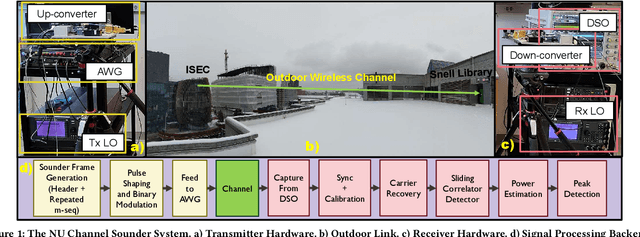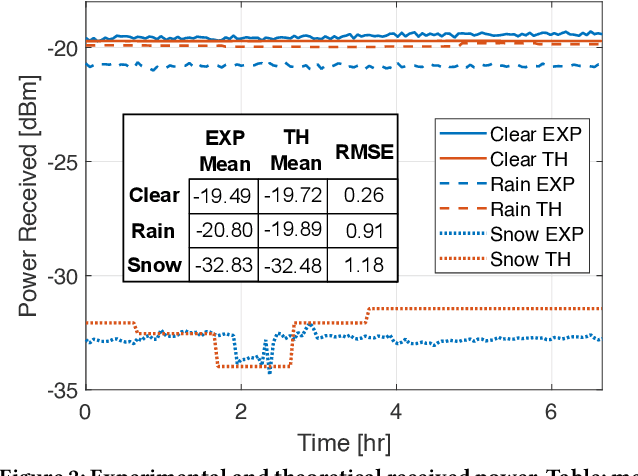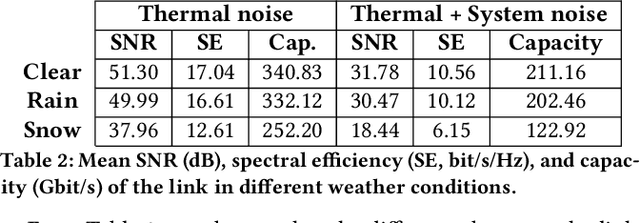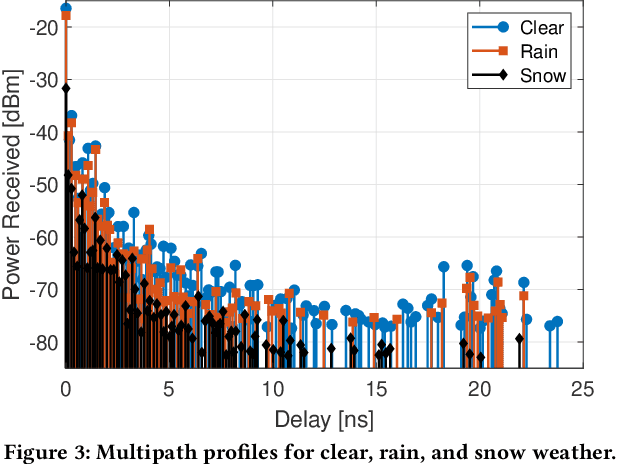Priyangshu Sen
Impact of the Antenna on the Sub-Terahertz Indoor Channel Characteristics: An Experimental Approach
Mar 07, 2024Abstract:Terahertz-band (100 GHz-10 THz) communication is a promising radio technology envisioned to enable ultra-high data rate, reliable and low-latency wireless connectivity in next-generation wireless systems. However, the low transmission power of THz transmitters, the need for high gain directional antennas, and the complex interaction of THz radiation with common objects along the propagation path make crucial the understanding of the THz channel. In this paper, we conduct an extensive channel measurement campaign in an indoor setting (i.e., a conference room) through a channel sounder with 0.1 ns time resolution and 20 GHz bandwidth at 140 GHz. Particularly, the impact of different antenna directivities (and, thus, beam widths) on the channel characteristics is extensively studied. The experimentally obtained dataset is processed to develop the path loss model and, subsequently, derive key channel metrics such as the path loss exponent, delay spread, and K-factor. The results highlight the multi-faceted impact of the antenna gain on the channel and, by extension, the wireless system and, thus, show that an antenna-agnostic channel model cannot capture the propagation characteristics of the THz channel.
Terahertz Communications Can Work in Rain and Snow: Impact of Adverse Weather Conditions on Channels at 140 GHz
Aug 29, 2022



Abstract:Next-generation wireless networks will leverage the spectrum above 100 GHz to enable ultra-high data rate communications over multi-GHz-wide bandwidths. The propagation environment at such high frequencies, however, introduces challenges throughout the whole protocol stack design, from physical layer signal processing to application design. Therefore, it is fundamental to develop a holistic understanding of the channel propagation and fading characteristics over realistic deployment scenarios and ultra-wide bands. In this paper, we conduct an extensive measurement campaign to evaluate the impact of weather conditions on a wireless link in the 130-150 GHz band through a channel sounding campaign with clear weather, rain, and snow in a typical urban backhaul scenario. We present a novel channel sounder design that captures signals with -82 dBm sensitivity and 20 GHz of bandwidth. We analyze link budget, capacity, as well as channel parameters such as the delay spread and the K-factor. Our experimental results indicate that in the considered context the adverse weather does not interrupt the link, but introduces some additional constraints (e.g., high delay spread and increase in path loss in snow conditions) that need to be accounted for in the design of reliable Sixth Generation (6G) communication links above 100 GHz.
 Add to Chrome
Add to Chrome Add to Firefox
Add to Firefox Add to Edge
Add to Edge